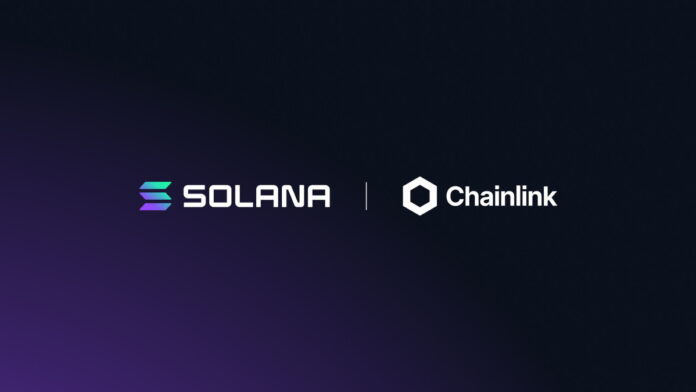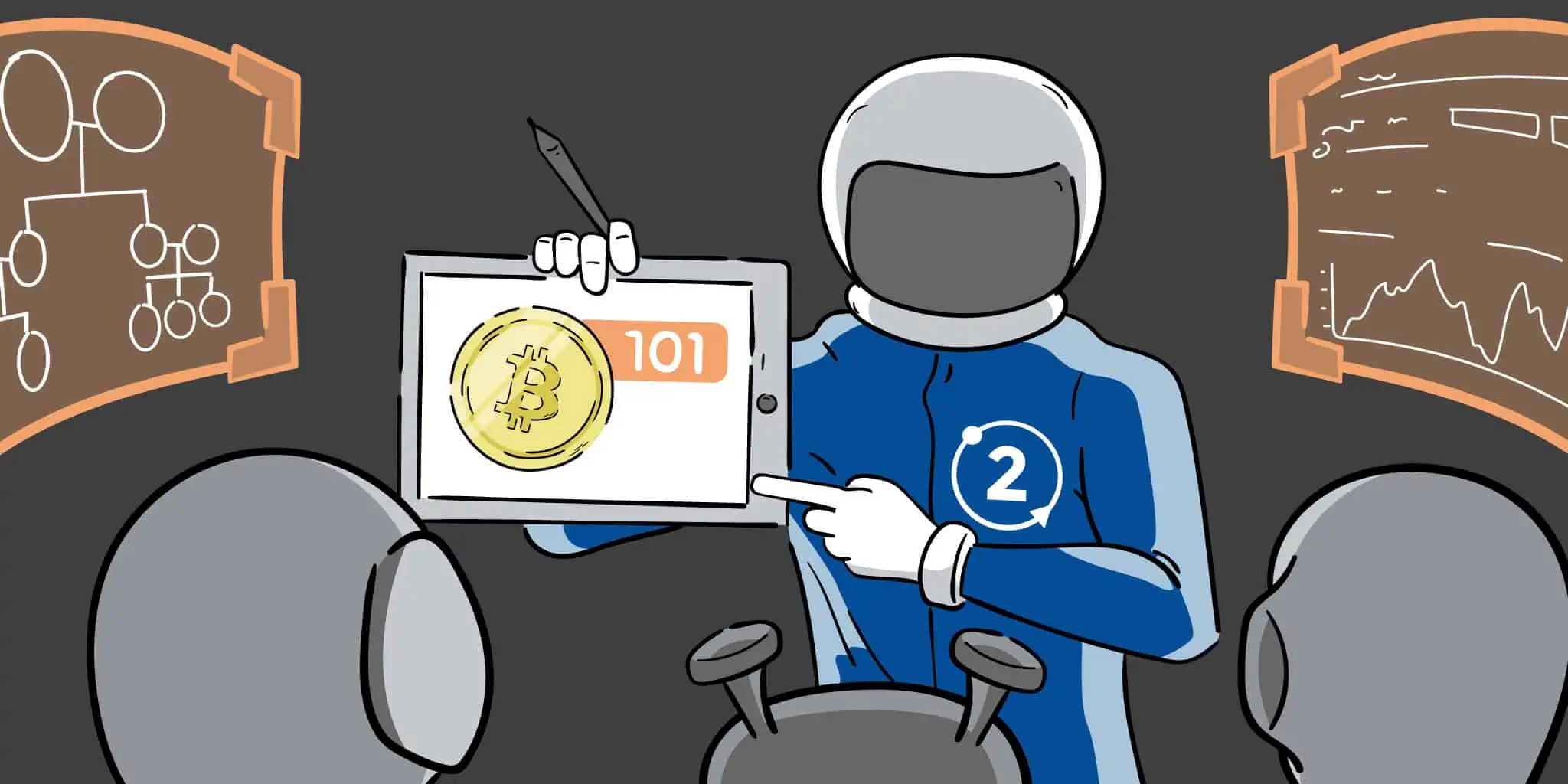
Chainlink announces CCIP activation on Solana, unlocking over $19 billion in assets for DeFi
The blockchain revolution is being written with new alliances that expand technological frontiers, and in that sense, Solana, known for its lightning speed and low transaction costs, has just taken a decisive step that catapults it to the forefront of blockchain interoperability. Thanks to this, Solana has become the first non-EVM chain—that is, outside the Ethereum Virtual Machine environment—to integrate with Chainlink CCIP (Cross-Chain Interoperability Protocol), thereby opening a new new chapter in multichain development for users and developers.
For those looking to delve into the crypto world and take advantage of these innovations, platforms like Bit2Me offer purchasing and exchange services that facilitate secure and easy access to cryptocurrencies, providing an ideal bridge to take advantage of these new opportunities brought by the merger between Solana and Chainlink CCIP.
BUY SOLANA (SOL) ON BIT2METhe Impact of the Solana-Chainlink Integration: Why Is It So Important?
Solana has positioned itself as a preferred blockchain network due to its ability to process thousands of transactions per second at minimal costs, characteristics that make it attractive for DeFi (decentralized finance) projects and decentralized applications (dApps). However, until now, interoperability with other chains, especially those based on Ethereum, has been a challenge. The arrival of Chainlink CCIP breaks these barriers. This protocol allows data, assets, and information to be transferred securely and reliably between different blockchains.
For users, this integration means access to a nearly unprecedented multichain universe. Imagine being able to move assets from Ethereum, BNB Chain, or other networks to Solana and vice versa, with the peace of mind that comes with Chainlink's robust, decentralized infrastructure. This bridging boosts liquidity, diversifies opportunities, and opens the door to new financial and tokenized products that leverage the best of each network.
For example, a user could hold a dollar-pegged stablecoin on Ethereum and transfer it to Solana to take advantage of low fees and faster transactions, without losing value or security in the process. For developers, this integration increases the viable ecosystem to build upon, as they can now create solutions that don't rely exclusively on the EVM infrastructure.
Chainlink CCIP: The Nerve Center of Blockchain Interoperability
Chainlink isn't a new name for those following the evolution of blockchain. Known primarily for its secure oracles that connect blockchains to real-world information, Chainlink has expanded its reach with CCIP. This protocol not only enables asset transfers but also smart contract communication across heterogeneous chains.
The advancement that CCIP represents for the ecosystem is crucial. Where fragmentation and isolation once existed, collaboration and connection are now fostered. This is particularly vital for DeFi, where the ability to access liquidity and services across multiple blockchains can make the difference between success and stagnation.
But Chainlink isn't limited to DeFi. The impact on the TradFi world—traditional finance—is equally promising. Financial institutions looking to migrate to blockchain technologies or simply innovate through tokenized assets find in CCIP a secure and scalable bridge to integrate their existing processes with decentralized solutions.
For example, the tokenization of real assets such as real estate, stocks, or bonds can be managed on different blockchains, taking advantage of the specialization of each ecosystem. Chainlink CCIP acts as the connective tissue that ensures transparency, security, and speed in these transactions.
GO TO BIT2ME CARDConcrete benefits for Solana and its users
The integration with Chainlink CCIP isn't just a technical or symbolic achievement for Solana; it has tangible impacts on its ecosystem. First, it allows it to attract institutional capital that might have previously been reluctant to face the limited interoperability. By being part of a trusted multichain system, Solana becomes a much more attractive destination for funds and projects with large asset volumes.
Furthermore, the developer community is incentivized to create applications that leverage interoperability. Projects like Maple Finance are already exploring how to bring their products to Solana, facilitating a broader and more diversified financial offering for users of this network. Imagine having a stablecoin or decentralized credit product running at the speed of Solana, but backed by the security and broad multichain access offered by CCIP.
For the average user, the benefits translate into smoother, faster, and more cost-effective experiences. Cross-chain transactions, crucial for strategic portfolio movements, become simple and secure. In this sense, the alliance fosters an ecosystem where flexibility and efficiency are key.
A look at how Chainlink CCIP works on Solana
At a technical level, CCIP in Solana is accompanied by important improvements in the version 1.6 of the protocol. These include an optimized internal architecture that reduces transaction costs and improves scalability to support multiple chains simultaneously. Solana, with its Proof of History (PoH) consensus-based infrastructure and high throughput, is ideally suited to this environment.
The protocol allows messages and data to be securely packaged and verified before being transmitted to a smart contract on another chain, ensuring that the process is resilient to attacks and bugs. This is vital to maintaining transaction integrity and end-user trust.
An illustrative example would be a DeFi application that wants to offer a loan collateralized using assets on one network and pay interest based on updated data from another. Thanks to CCIP, both worlds can communicate seamlessly.
The vision of the future: multichain as the norm, not the exception
Solana's arrival on Chainlink CCIP is not a one-off event, but rather part of a growing trend toward the adoption of multichain solutions that seek to push the boundaries of the traditional blockchain ecosystem. As more chains connect and collaborate, users can enjoy the best of each network without sacrificing security or efficiency.
This paradigm fosters innovation, as developers can combine unique features from different platforms, from the ultrafast speed of Solana to the robustness and community of Ethereum. For investors, this means a diversification of risks and opportunities in a single space.
At the same time, Chainlink is consolidating its position as a benchmark hub for blockchain interoperability and service orchestration. Its CCIP technology is emerging as the de facto standard for connecting blockchains, facilitating not only DeFi but also the integration of assets and processes into traditional finance.

Bitcoin 101 Course
Medium levelIn Bit101Me Academy's Bitcoin 2 Course you can continue your crypto education and learn what Bitcoin is, where it comes from and how to obtain it.
What should users and developers know now?
For those exploring or already part of the Solana ecosystem, this integration opens up a range of possibilities. From participating in new projects that use CCIP to offer innovative services to taking advantage of reduced costs and time in multichain transactions.
Developers, for their part, have access to a robust and documented infrastructure that allows them to design more complex and powerful applications that interact with multiple networks without sacrificing security or performance.
In this context, having reliable cryptocurrency exchange and purchasing platforms like Bit2Me makes it easier for anyone to access digital assets and begin exploring this new multichain ecosystem safely and efficiently.
Investing in cryptoassets is not fully regulated, may not be suitable for retail investors due to high volatility and there is a risk of losing all invested amounts.


